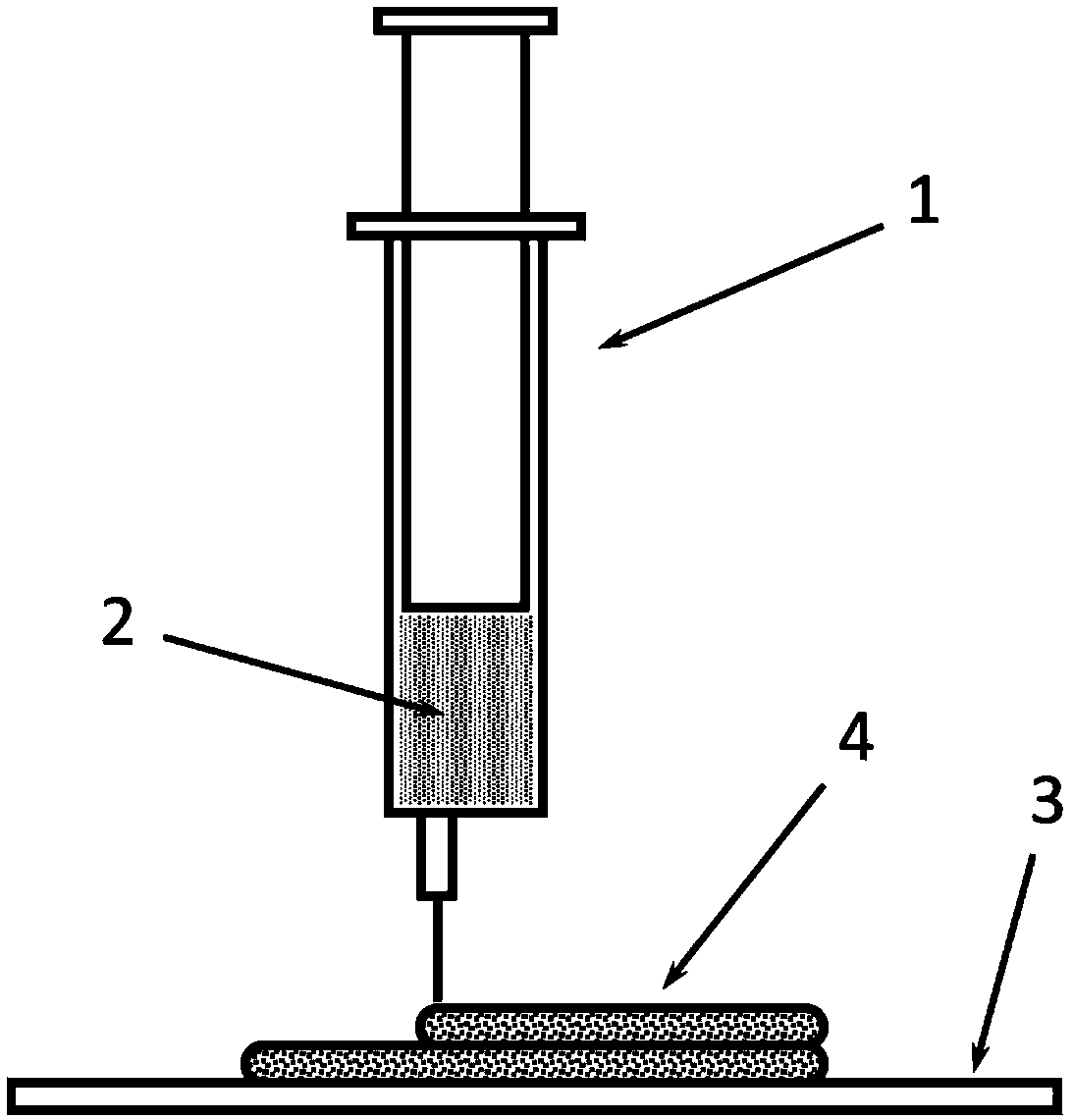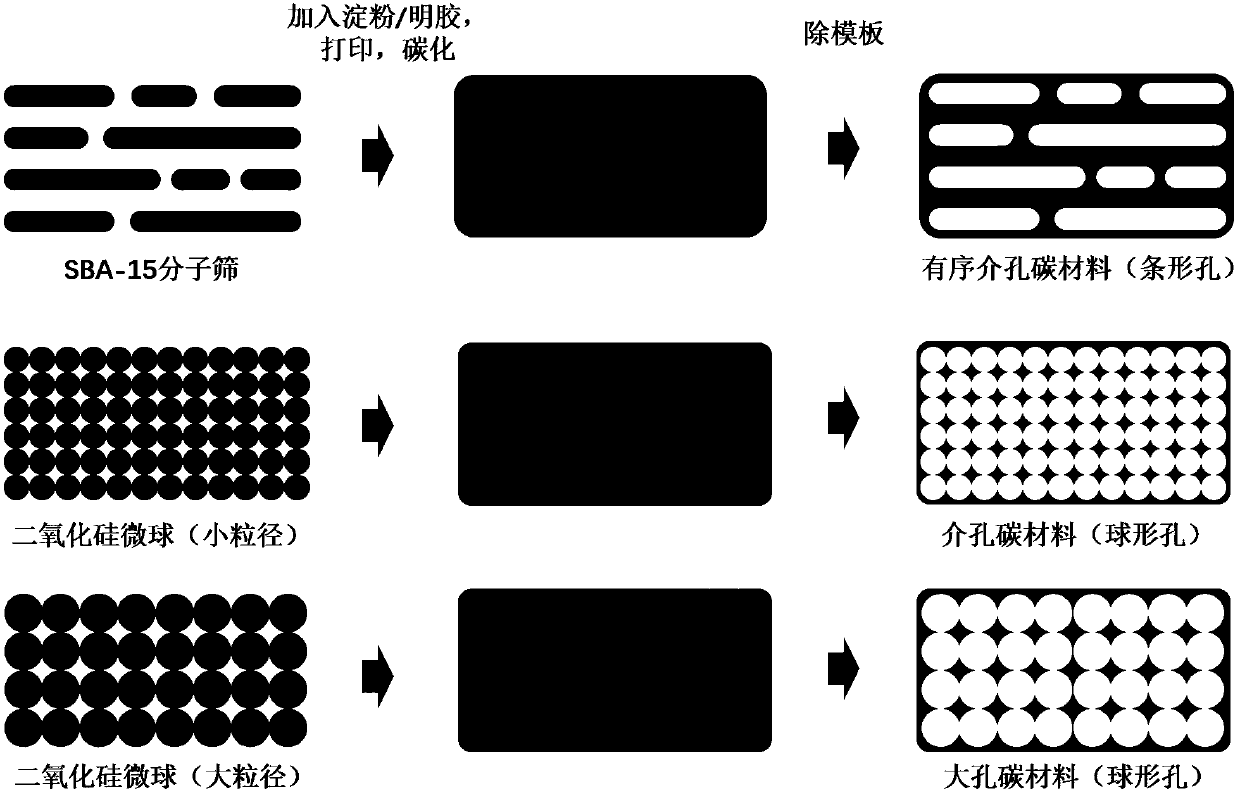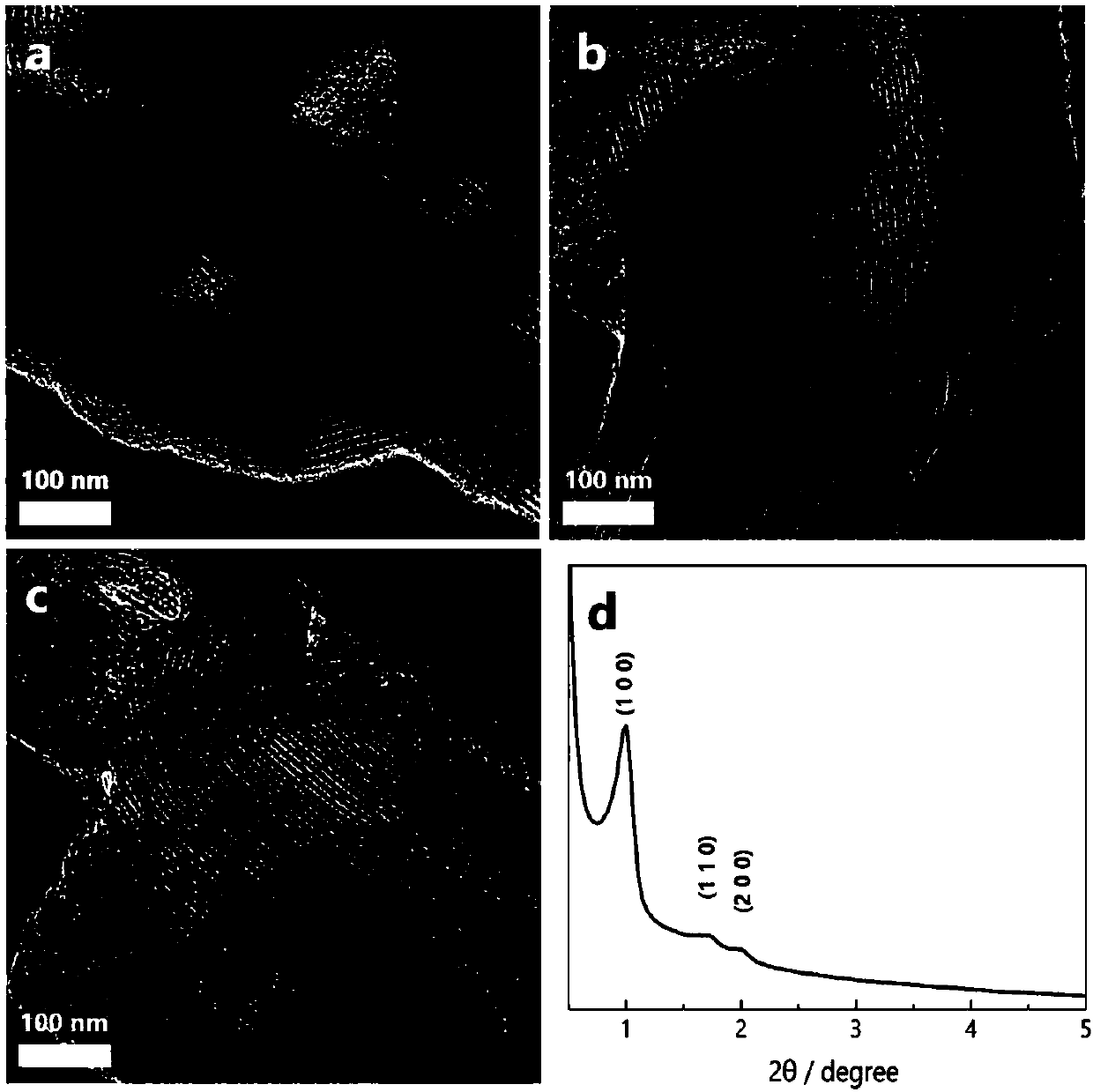3D printing formation method for mesoporous/macroporous carbon material with controllable pore structure
A pore structure and macroporous carbon technology, applied in the field of 3D printing, can solve the problems of high cost and complex process, and achieve the effect of low cost, simple process, easy small-scale laboratory research and large-scale industrial production.
- Summary
- Abstract
- Description
- Claims
- Application Information
AI Technical Summary
Problems solved by technology
Method used
Image
Examples
Embodiment 1
[0037] Add 1.5g of mesoporous molecular sieve SBA-15 powder into 7.5mL of distilled water, ultrasonically disperse for 30 minutes to make a suspension, add 3g of starch and 0.9g of gelatin into the suspension, and keep stirring at 90°C for more than 30 minutes. It is fully gelatinized, and then the resulting sol is loaded into a 3D printer for printing. The obtained material was freeze-dried and then carbonized at 900°C under Ar atmosphere. The carbonized material is washed with 2mol / L NaOH solution, and then the excess lye is removed with 2mol / L dilute nitric acid solution, and the printed carbon material structure can be obtained after drying.
[0038] The electron micrographs of the obtained carbon materials are as follows: image 3 b and image 3 as shown in c. It can be seen that the interior of the material is composed of a uniform and ordered decomposed pore structure. The microstructure of the material channel and the structure of the SBA-15 template ( image 3 As...
Embodiment 2
[0040] Add 1.5g of monodisperse silica microspheres with an average diameter of 50nm into 7.5mL of distilled water, and ultrasonically disperse for 30 minutes to make a suspension. Add 3g of starch and 0.9g of gelatin to the suspension, and keep stirring at 90°C More than 30 minutes to make it fully gelatinized, and then put the obtained sol into the 3D printer for printing process. After the obtained material was freeze-dried, in N 2 Carbonization at 1100°C under atmosphere. The carbonized material is washed with 2mol / L NaOH solution, and then the excess lye is removed with 2mol / L dilute nitric acid solution, and the printed carbon material structure can be obtained after drying.
[0041] The electron micrographs of the obtained carbon materials are as follows: Figure 4 a and Figure 4 shown in e. It can be seen that the interior of the material is composed of uniform and connected spherical cavities, the pore diameter is controlled at about 50nm, and the pore size unifo...
Embodiment 3
[0043] Add 1.5g of monodisperse silica microspheres with an average diameter of 50nm into 7.5mL of distilled water, and ultrasonically disperse for 30 minutes to make a suspension. Add 3g of starch and 0.9g of gelatin to the suspension, and keep stirring at 90°C More than 30 minutes to make it fully gelatinized, and then put the obtained sol into the 3D printer for printing process. After the obtained material was freeze-dried, in N 2 Carbonization at 850°C under atmosphere. The carbonized material is washed with 2mol / L NaOH solution, and then the excess lye is removed with 2mol / L dilute nitric acid solution, and the printed carbon material structure can be obtained after drying.
PUM
| Property | Measurement | Unit |
|---|---|---|
| specific surface area | aaaaa | aaaaa |
| specific surface area | aaaaa | aaaaa |
| specific surface area | aaaaa | aaaaa |
Abstract
Description
Claims
Application Information
 Login to View More
Login to View More - R&D
- Intellectual Property
- Life Sciences
- Materials
- Tech Scout
- Unparalleled Data Quality
- Higher Quality Content
- 60% Fewer Hallucinations
Browse by: Latest US Patents, China's latest patents, Technical Efficacy Thesaurus, Application Domain, Technology Topic, Popular Technical Reports.
© 2025 PatSnap. All rights reserved.Legal|Privacy policy|Modern Slavery Act Transparency Statement|Sitemap|About US| Contact US: help@patsnap.com



